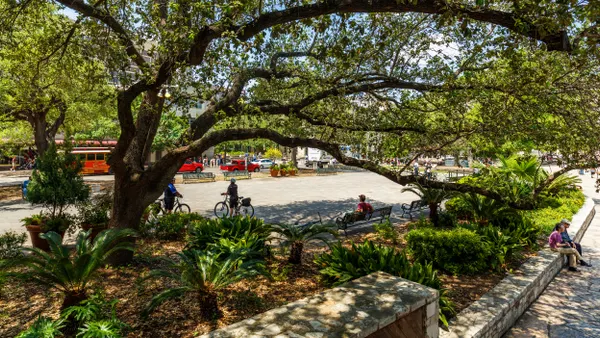Editor's Note: The following is a guest post from Amos Haggiag, CEO and co-founder of transportation software company Optibus.
Public transit has been severely affected by the COVID-19 pandemic in cities around the world. While the impact has been extensive – ridership has declined as much as 90% for some services — the radically altered position of public transit goes beyond economics; it actually turns some of our core beliefs about transit on their heads.
In normal times, high-quality public transit is a public good that makes it easier to breathe the air, brings down the number of traffic fatalities and grants access to the places we need and want to go, without requiring private car ownership to get there.
But these aren't normal times. The movement of many people at the same time has been transformed from public good to public risk. What’s important now is reducing the spread of the virus by reducing the human presence on all those assiduously disinfected vehicles and at the destinations to which those vehicles travel.
This flipped approach has led to previously unthinkable social media statements from transit providers urging riders to stay home and thanking people for not riding.
This. Friends don't let friends take non-essential trips. #wmata https://t.co/x8NH2v62KX
— Metro (@wmata) March 19, 2020
That’s the thing, though. While quite a lot of trips have turned out to be less essential than we thought — at a time when many are being urged to work from home, get groceries delivered and generally hunker down — public transit continues to provide an essential service for those who really do need it, like hospital staff, first responders and supermarket workers. This leaves cities and transit agencies in a bind: Service must continue, but how can we best adapt it to the circumstances surrounding COVID-19?
What agencies are doing to adapt transit service
Over the past few weeks, transit agencies around the world have been trying to figure out how to contend with the fallout of COVID-19, including sharp declines in ridership and current or expected driver shortages amid efforts to minimize virus transmission.
Some transit providers may want to start by simply switching from weekday service to more restricted weekend or holiday service, though this is a generic change that may not offer the flexibility needed for residents.
Service may also be reduced by adjusting variables such as the following:
- Number of routes: Routes that serve fewer people or that go to destinations that have been closed, such as schools, may be good candidates. Night routes, seasonal routes and certain commuter routes may also be candidates for cuts.
- Number of stops: Fewer stops means less crowding, and reducing stops also makes each trip shorter, which enables more trips even with a driver shortage.
- Vehicle capacity: Another way of reducing crowding is to restrict the number of passengers allowed on each vehicle, by capping boarding and/or switching vehicle type to vehicles with smaller capacity.
- Frequency: For routes that are less essential, reducing frequency can be a way to compensate for driver shortages. On the flip side, increased frequency may be warranted for essential and/or crowded routes — like those used by hospital staff — to avoid crowding.
- Interlining: One way to make transit more efficient, which becomes increasingly important when fewer drivers are available, is by having the same driver switch from one route to another, using the same vehicle (that is, interlining). To enable this, it may be necessary to train drivers on multiple routes so that they can easily take on additional routes, whether through interlining or by covering for each other when another driver can’t come to work.
- Span: Service hours may be curtailed, so routes that normally run from, say, 5 a.m. to 10 p.m. may start running from 7 a.m. to 7 p.m. instead.
Of course, it’s not easy to create new plans on the spot in a stressful and constantly shifting situation. But rapid planning cycles that keep these approaches in mind, combined with schedules and rosters that are optimized for greater efficiency — enabling service cuts that are less than would be expected based on driver availability — can provide cities and transit providers with some leeway even as more drivers potentially call in sick or stay home to care for family members.
By modeling various scenarios that take a city's needs into account, including crucial information such as which destinations must continue to be accessible by public transit and which routes serve those destinations, cities and transit agencies will be able to act fast to make the most informed decisions they can under changing conditions.
What's more, cities and transit agencies that become more agile as they adapt to COVID-19 contingencies will be better prepared to tackle the next big challenge: gradually reversing the ridership free fall when public transit — not just for essential travel, but for even the most mundane of trips — once again takes up its role as the public good we have so long known it to be.










